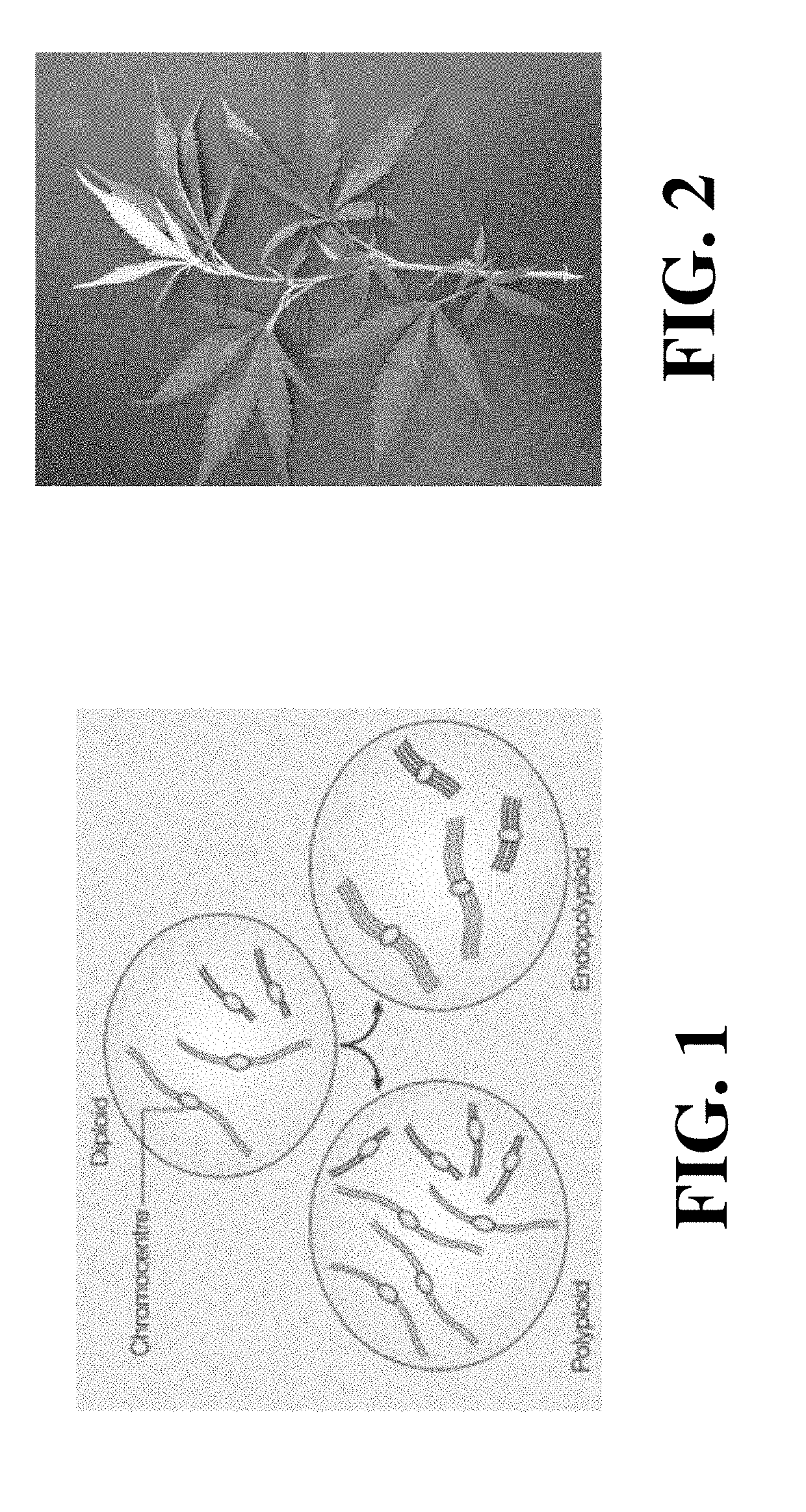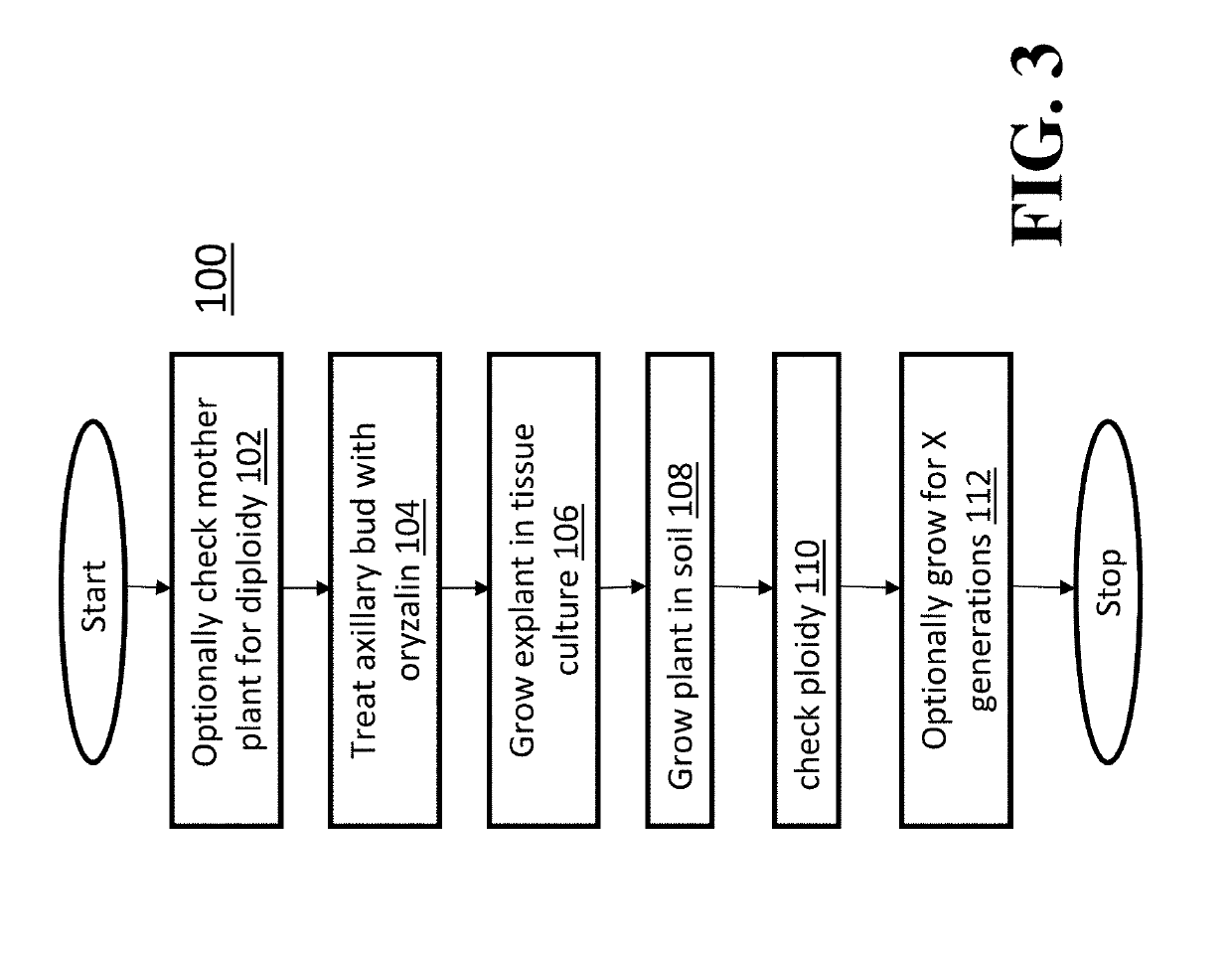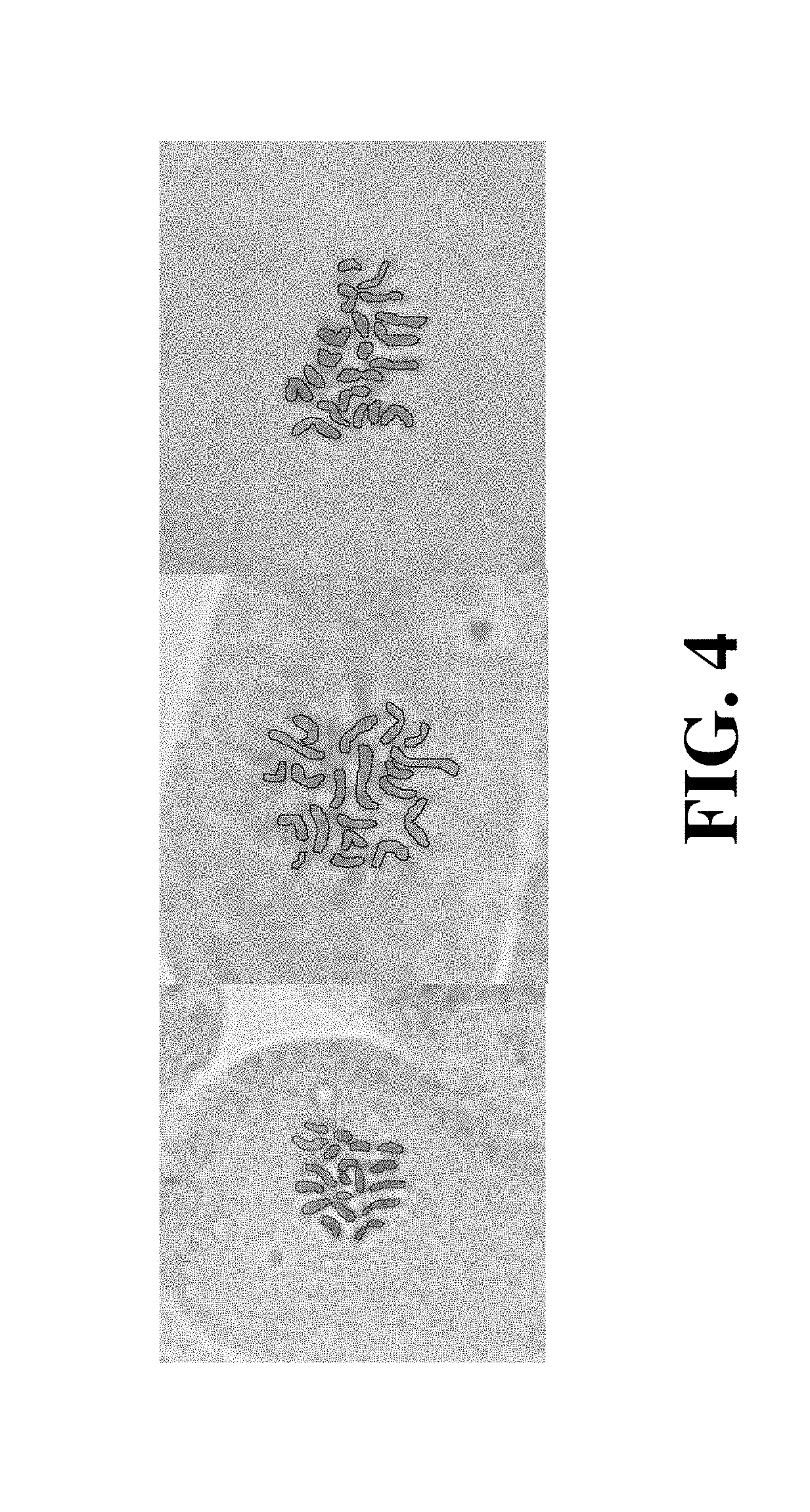Methods for inducing polyploidy in cannabis
- Summary
- Abstract
- Description
- Claims
- Application Information
AI Technical Summary
Benefits of technology
Problems solved by technology
Method used
Image
Examples
example 1
Chromosome Counting Method
[0064]Chromosomes were observed in C. sativa using the root tip squash method. Briefly, root tips were harvested, and fixed in 3:1 ethanol:acetic acid for 24 hours. The roots were then hydrolyzed in 1M HCl for 2 minutes at 60° C. and rinsed with ice cold water three times. Roots were stained in 2% acetocarmine for 2 hours at 60° C. To prepare the slides, a few millimeters of the root tip was removed from each root, macerated with a scalpel, and crushed with a flat metal surface. A coverslip was applied and tapped gently to spread out the cells. The slide was heated gently on a hot plate and squashed between filter papers. FIG. 4 shows chromosomes in the root tip cells of Hindu Kush C. sativa. The individual chromosomes have been outlined for clarity. Cells were stained with 2% acetocarmine and photographed under 1000× magnification on a Zeiss Lab A1 microscope with an Axiocam 105 color cameral. In the photograph, the Hindu Kush is diploid, showing 20 chromo...
example 2
Axillary Bud Culture Methods
[0065]Axillary bud regeneration methods were established as provided in the following example. Growth in semi-solid media containing various shoot elongation hormones was tested to identify the best conditions for tissue culture of axillary bud from C. sativa. In Table 1, Skunk Haze C. sativa axillary buds were grown in semi-solid media containing 30 g / L sucrose, 4.43 g / L Murashige & Skoog basal nutrient media, and 8 g / L agar. Three hormone combinations were tested: 0.5 mg / L metatopolin (mT) (Lata et al. 2016), 0.5 mg / L of thidiazuron (TDZ) and 7 mg / L of gibberellic acid (GA3) (Lata et al. 2009), and 0.3 mg / L of 1-Naphthaleneacetic acid (NAA) and 0.4 mg / L of kinetic (KIN) (determined to be effective in previous trials). Sterilized portions of the axillary bud (explants) were implanted in each of the three types of media and the explants were grown for 4 weeks at approximately 50 mol / m2 / sec light on a 16 h day cycle. The height of the explants was measured...
example 3
Trial Using Oryzalin to Clarify Procedure
[0069]A trial was conducted using oryzalin to clarify the procedure to produce polyploid C. sativa using the methods of culture and chromosome counting in Examples 1 and 2. The media used in this trial was an early media. A different media was developed for later trials. The oryzalin treatment of axillary buds was as follows: Axillary buds at early stages of development were chosen (e.g., no large leaves emerged). All explants were taken from a single mother for consistency. The explants placed in water in a 4° C. refrigerator overnight (cold treatment was used to reduce oryzalin toxicity and to slow down mitosis so the oryzalin could take effect) and sterilized. Later experiments skipped the refrigeration step and used fresh samples instead. Axillary buds were immersed in liquid MS media (supplemented with 30 g / L sucrose, no hormones) with 2.5 μM or 5.0 μM oryzalin for 24 and 48 hours prior to introduction onto shoot growth media. Explants w...
PUM
 Login to View More
Login to View More Abstract
Description
Claims
Application Information
 Login to View More
Login to View More - R&D
- Intellectual Property
- Life Sciences
- Materials
- Tech Scout
- Unparalleled Data Quality
- Higher Quality Content
- 60% Fewer Hallucinations
Browse by: Latest US Patents, China's latest patents, Technical Efficacy Thesaurus, Application Domain, Technology Topic, Popular Technical Reports.
© 2025 PatSnap. All rights reserved.Legal|Privacy policy|Modern Slavery Act Transparency Statement|Sitemap|About US| Contact US: help@patsnap.com



